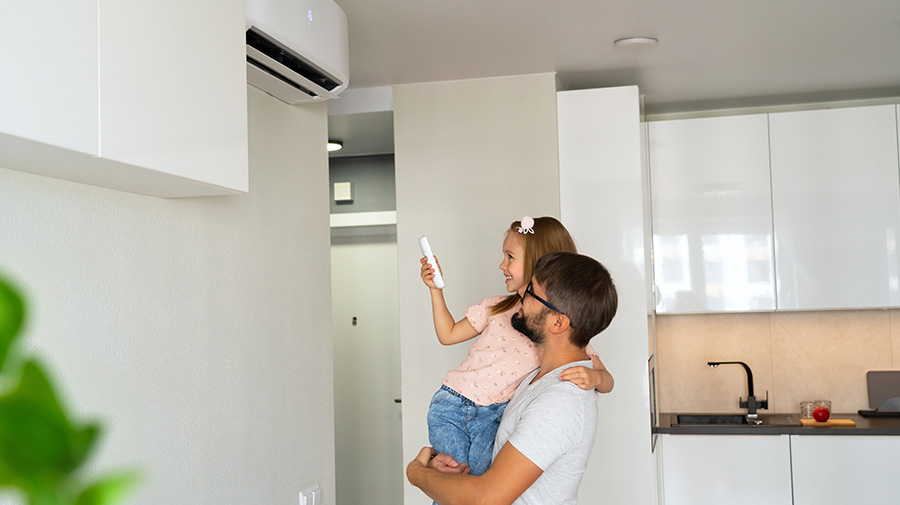Small steps. Cheap or no-cost tweaks around the home to reduce your annual energy costs.
Heating and cooling
- Set your temperatures for efficiency:
- heating 18-20°C
- cooling 25-27°C (a fan will also cool you down)
- If you have an energy efficient reverse-cycle air conditioner, use this to heat your home over your gas heating.
- Each degree of heating in winter or cooling in summer increases energy consumption by up to 10%.
- Only heat rooms you are using and turn off heating in empty rooms. Close doors to reduce the area you need to heat.
- In winter, when the sun goes down, close your curtains and blinds to keep heat in.
- If you have evaporative cooling, keep your windows open. This also avoids any extra dampness inside.
- Seal air leaks around windows, doors, and other openings. Use weatherstripping and caulking to prevent drafts. Check for gaps around pipes, vents, and electrical outlets.
- Turn off your heater or air conditioner when you leave home or go to bed.

Hot water
- Set the hot water temperature to 50°C on a continuous flow hot water system or 60°C on a hot water storage system.
- Reduce your hot water use by using a water-saving shower head.
Appliances
- Research energy-efficient replacements for when you need to replace household appliances, for example, an energy efficient fridge.
- Check the seals on your fridge and oven door to ensure there are no gaps or cracks.
- Set your fridge to 3°C and your freezer between -15 and -18°C, for greatest efficiency.
- Defrost frozen food in the fridge overnight to avoid using the microwave. The thawing food also saves energy by keeping your fridge cool.
- Use a slow cooker, air fryer or microwave. Small appliances use much less energy than an electric oven.
- Avoid opening the oven door when cooking to retain the most heat.
- Boil water in an electric kettle rather than on the stove.
- Only turn on a second fridge or freezer when you need it.
- Switch your devices to energy-saving mode to conserve energy while working.
- Use economy mode on your dishwasher and only run it when it’s full.
- Switch appliances off at the wall when not in use.
Lighting and laundry
- Switch to energy-saving LED light globes. LEDs use at least 75% less energy than halogen bulbs and last up to 25 times longer.
- Use a lamp instead of overhead lighting if you only need a small amount of light.
- Switch off lights when you leave a room.
- Wash laundry in cold water and use a short cycle. Only do the laundry when the washing machine is full.
- Avoid using a clothes dryer. Hang clothes outside to dry or use a clothes airer and a fan.
Energy usage tools
- Use the Victorian Government’s free and independent energy price comparison tool to find the best deal. Victorian Energy Compare compares energy offers from more than 20 retailers across gas, electricity and solar to help you find the best and cheapest energy offers.
- Download the Australian Government’s Energy Saver Guide.



